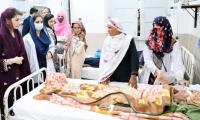What promised to be a peaceful September morning turned into a nightmare. As usual, that day (a beautiful diaphanous day with a very clear sky) my wife and I woke up about 7 am. We had breakfast and she left for work on Long Island, about 45 minutes from home. I was planning to have a working lunch at United Nations headquarters.
After the second attack on the towers I tried to contact my wife at work. It was impossible to communicate by phone with her. I learned, however, that I could call Queens, where a medical colleague, Dr. Juan Rivolta, lived. I wanted to see if I could communicate with my wife through him. I summarized what had happened. He thought I was joking but changed his attitude when he heard the desperation in my voice and finally was convinced when I told him to turn on the TV.
Juan was able to communicate with my wife and told me that she was safe. When we spoke later that day she explained that soon after arriving at her college someone had called the office so they turned on the TV and were able to witness the horror of the events taking place. Since virtually all roads leading to New York City were closed, my wife stayed at a colleague’s house for the next three days.
Satisfied that my wife was safe while I was still in a state of shock, I went to a nearby square and sat on a bench watching people hurrying to the scene. That state of shock stuck with me, like with many other New Yorkers, for months after the attacks. We could smell the pungent odor of burned materials, some of which certainly came from the incinerated bodies of the thousands of people who had perished there. One was Sean Rooney, whose last moments were described by his wife, Beverly Eckert. He called her from the 105th floor; he was unable to find an escape route; the flames were approaching ominously and, during his last minutes of life, he only managed to say “I love you, I love you.” Then, when the smoke prevented him from speaking, Beverly heard the terrible noise of something cracking, followed by the sound of an avalanche and a groan.
It seems impossible that anyone trapped inside the towers could have survived. Yet that is what happened to 20 people, including some firefighters and police officers and an administrative secretary of the Port Authority, Genelle Guzman-McMillan. As Matthew Shaer tells it in New York magazine, Genelle followed a group of colleagues to the smoke-filled stairway. As they descended, Genelle was certain that she would survive and could go down and meet her boyfriend, as they had planned. However, when the building collapsed, she suddenly lost her balance and was dragged to the ground floor surrounded by tons of cement and steel. Finally she stopped, and felt something soft and warm under her – it was a dead person. She remained silent for 27 hours, praying and asking God for her life. A German Labrador named Trakr found her.
The shock people experienced as a result of the attacks perhaps mirrored the shock that Americans felt after the Japanese attack on Pearl Harbor. Such was the state of fear that the noise of aircraft crossing the sky was enough to frighten New Yorkers. Such fears led to unexpected reactions.
The attacks on the Twin Towers produced the most concentrated response to an emergency in the history of the US. It is estimated that at least 100 emergency units and dozens of private ambulances headed to the scene to pick up the wounded and take them to nearby hospitals. At the same time, more than 2,000 police officers searched the towers and rescued survivors. But the weight of the response fell to the New York Fire Department, whose response to the events was truly heroic.
One of the lessons to be drawn from that tragedy is that violence begets violence and intolerance breeds intolerance. Unless there is a new approach to preventing terrorist acts we will continue to live under the threat of terror. Confrontation is not the answer. While it is easy to create enemies, it is much harder to understand the ‘other’, a necessary approach if we wish to eliminate conflict, and honor the desire for peace and security of all people in the world.
Courtesy: Counterpunch.org
After November 30, it will be impossible for ordinary internet users to access all banned websites, including X
Muslims participated alongside their Hindu fellow villagers and other residents of area
For last eight years, HEC's budget has been virtually stagnant in absolute terms
Home to 14 million people, Lahore has always been celebrated as Pakistan’s historical, culinary, and cultural hub
Partnership between Pakistan and China in media and culture reflects shared commitment to strengthening bilateral...
This article focuses on single error committed by our respected judiciary which haunts me more than I would care to...







